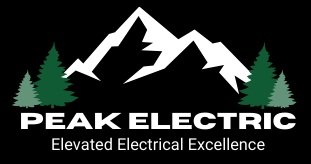When Is It Time to Upgrade Your Electrical Panel?
Signs to Watch For and Why It Matters
Your electrical panel is the heart of your home’s power system. It directs electricity from the utility company into your home, safely distributing it across your lighting, outlets, appliances, and systems. But just like anything else in your home, it has a lifespan — and over time, your needs can easily outgrow what your existing service can provide.
At Peak Electric, we’ve helped homeowners throughout Windham and the Lakes Region area modernize their electrical systems to meet growing demands safely and efficiently. If you're unsure whether your home is due for an upgrade, this guide will walk you through everything you need to know.
Why Electrical Panel Upgrades Matter
Upgrading your electrical service isn’t just about having more power — it’s about having the right kind of power delivered safely and reliably. Many homeowners don’t realize just how much has changed in the past few decades in terms of electrical codes, technology, and lifestyle needs.
Here are some of the most important reasons to consider an upgrade:
Prevent Overloads and Electrical Fires
Older panels may not handle modern energy demands, leading to overloaded circuits that overheat or short out. This creates a major fire risk, especially if the panel itself shows signs of corrosion or wear.Accommodate Modern Living
If you’re working from home, charging an electric vehicle, running high-efficiency HVAC systems, or using smart home tech, you’re likely putting more strain on your system than it was ever designed to handle. A modern electrical panel ensures you have the capacity for today’s needs — and tomorrow’s.Support Home Improvements
Planning a kitchen remodel? Adding a hot tub, heat pump, or standby generator? Upgrading appliances or building an addition? These types of upgrades typically require more power than an outdated 100-amp panel can safely deliver.Improve Energy Efficiency and Safety
Newer panels and components offer improved safety mechanisms like arc-fault and ground-fault protection. They can also reduce energy waste and improve overall electrical performance, lowering long-term costs.Increase Property Value
A clean, updated panel not only improves safety but also appeals to potential buyers. Many home inspectors flag outdated panels, and some insurance companies may even refuse to insure homes with certain types of old equipment (like fuse boxes or known recalled panels).
Clear Signs It’s Time for an Upgrade
While some issues are obvious, others are more subtle. Here are the most common red flags we see in homes that are overdue for a panel upgrade:
Frequent breaker trips, especially when running multiple devices or appliances
Flickering or dimming lights when using larger equipment like vacuums or microwaves
Outdated panels with brands known for safety issues (like Zinsco or Federal Pacific)
Rust, corrosion, buzzing, or a burning smell coming from your panel
No room for additional circuits, often leading homeowners to install multiple sub-panels or use unsafe workarounds like extension cords and splitters
Recent or planned renovations that add major electrical loads, such as new appliances, HVAC systems, EV chargers, or outdoor equipment
If you notice any of these, it’s a good time to call a licensed electrician for an evaluation — especially before adding new electrical loads.
What an Upgrade Includes
Upgrading your electrical service usually means:
Replacing your main electrical panel with a new, code-compliant one
Increasing your amperage (commonly from 100 amps to 200 amps or higher)
Replacing outdated breakers, wiring, or grounding if needed
Coordinating with your utility provider for service disconnection and reconnection
Pulling permits and passing inspections to ensure everything is done safely and legally
While the process can take a day or two depending on complexity, it’s a high-impact upgrade that lays a safer and more reliable foundation for the rest of your home.
How to Know If You Need More Amperage
Most older homes were built with 100-amp service — enough back then, but usually not sufficient today. If you:
Run out of breaker space easily
Trip breakers when plugging in multiple devices
Use multiple power strips or extension cords regularly
Experience dimming lights or sluggish appliances
Are planning for a whole-home generator or EV charger
…it’s time to think about upgrading to a 200-amp panel or even higher if necessary.
Don’t Wait Until It’s an Emergency
Many homeowners wait until something goes wrong — a failed panel, a small fire, or an insurance issue — before acting. But upgrading before there’s a problem can save money, avoid headaches, and keep your home and family safer.
At Peak Electric, we offer detailed assessments and transparent advice. We’ll help you understand your current capacity, your future needs, and whether a panel upgrade is the right move for you.
Power Your Home for the Future
An electrical panel upgrade is an investment in peace of mind. It’s about protecting what matters most, preparing your home for growth, and giving you the flexibility to live comfortably with modern technology.
Ready to find out where you stand? Contact Peak Electric today to schedule a service evaluation and take the next step toward a safer, smarter, and more efficient home.
